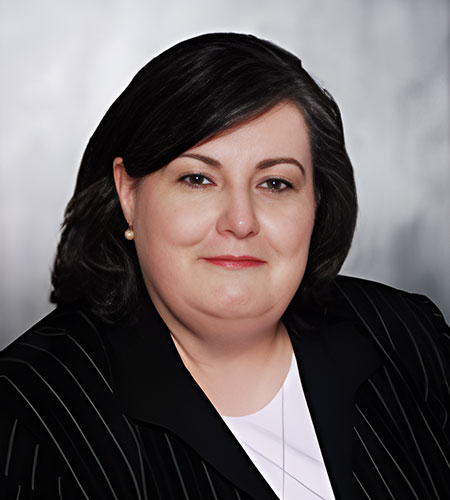
Written by Tudor Scolca
Helen Mendiola Banks of TICI Group sheds light on what’s ahead for these specialty categories.
Over the past five years, the healthcare and life science sectors have become increasingly more attractive to both commercial real estate investors and developers. These previously niche assets are now some of the most lucrative in the business and are on track to remain strong performers even in periods of slower economic growth.
The TICI Group of Cos. has more than a century of experience in advising public and private clients that invest in and manage these types of assets. Commercial Property Executive talked to Chairman Helen Mendiola Banks about how CRE interest in these specialized assets has evolved and where it might be heading.
What are the major factors driving the growth and transformation of the healthcare and life science CRE sectors?
Mendiola Banks: Over the last five years, these two real estate property classes have intersected due to several factors. Two of the major driving forces have been—and are—the aging population and COVID-19. Both have seen significant changes in space requirements.
While health systems are shrinking their general facility footprint, these same systems, along with physician practice groups, are growing and reconfiguring their space needs to accommodate patient and staff wellness.
Life science was already making a significant impact on the real estate scene with scenarios such as academia teaming with Big Pharma and major health systems developing life-altering drugs to cure diseases and prolong life. It wasn’t until COVID-19 and mass media coverage about the pandemic that the real estate community, as well as the public, began to pay attention to this important and fast-growing sector.
While healthcare real estate is a commonly known commodity, life science is not. Many parts of the country still lack major life science facilities, which are most often seen in conjunction with research and development facilities on Big Pharma campuses and universities. Local governing authorities and economic foundations have been tasked to fill this gap by recruiting developers and investors to fill the lack of supply.
A third area for concern which impacts both healthcare real estate and life science is the lack of the specialized workforce required. In the case of health care, a lack of physicians entering the field and the shortage of nurses has impacted operations, even more so since the burnout from COVID-19. For life science, it is attracting educated professionals to foster research and development. As a result, we are seeing healthcare systems joining with academia to recruit and educate the professionals needed to fill this void.
How does your company navigate the specific challenges that characterize this sector, as opposed to other commercial real estate assets? What about leveraging the right opportunities?
Mendiola Banks: As active participants in healthcare real estate, we have seen many changes over the last four decades. While not as affected by popular trends as other asset classes, it too is affected by population and demographics. Unlike office, retail, industrial, or multifamily, obtaining financing where lending has been favored at certain times, it has only been in the last seven to 10 years that medical/healthcare lending has become more familiar and easier to obtain.
Many lenders still do not have a good understanding or grasp of the nuances that are associated with the type of credit required and are willing to take the risk. It has, and will likely remain, a specialized category.
One of our jobs is to keep up with the lending environment to ensure our clients can get the best money available, whether they are remonetizing their asset(s) or buying or developing a new facility. It is even harder to find resources for life science unless it is tied to a major health system, university or corporation. Most are start-ups with limited financial resources, making it extremely risky for owners to invest.
We also understand both health care and life science have different types of occupants than other asset classes, and their space requires a more skilled and specialized professional to communicate and manage.
Where does the ceiling lie in terms of growth, and do you think we are approaching that point?
Mendiola Banks: The potential for growth will be at the forefront for the foreseeable future. It is going to take a great deal of time, money and resources to fill the gap in both need and desire to bring life sciences to the masses. Both health systems and academia are known for being slow to bring programs to fruition, let alone build the facilities to house them.
This will take vision, planning, politics, funding, and execution to put them on the map. Most states and major municipalities have already initiated plans or are in the planning stages of initiating such programs. It will take years, if not decades, to build all of this out.
Please expand on the rise of the bio life sciences sector. What differentiates these assets from other life science properties? What are some main factors that contribute to the growth of this niche?
Mendiola Banks: Bio life sciences has been a sleeping giant among scientists, academics, governing authorities and entrepreneurs. It is only since COVID-19 and the media’s attention over ways to manage the spread of the pandemic, that bio life sciences has come into the forefront of the public eye. With the continued exposure on various news fronts, investors, as well as the public, are more informed and aware of the need to push forward innovation and pioneer new methods and ways of prevention and treatment.
Laboratories and clean bio-tech manufacturing facilities have typically been in large single-tenant facilities. Life science companies start out in incubators and shared spaces, moving to larger multi-tenant properties, and then—ultimately and ideally—their own single-tenant facility. In the past, these facilities have usually been a single-story structure. However, with the lack of available space and the supply of vacant industrial and office buildings, many have chosen to go into multi-tenant, multi-story facilities which have been converted in various major metropolitan markets.
Are there any emerging U.S. markets for life science? Where are investment opportunities arising?
Rendering of 2300 Market by Breakthrough, a life science project currently underway in Philadelphia’s Center City District, on a site adjacent to the University of Pennsylvania and Drexel University. Breakthrough Properties is developing the project through a joint venture with Tishman Speyer and Bellco Capital. Image courtesy of Breakthrough Properties
Mendiola Banks: Yes, emerging markets are Houston, Dallas, Chicago and Minneapolis—behind Raleigh, N.C.; Philadelphia; Washington, D.C.; Seattle, Boston; San Francisco; San Diego.
Older properties are popping up around the country. While some are in the markets mentioned, others are not and present some challenges for sellers. Larger and new or converted properties in the right markets are valued at a premium and will likely trade at a higher rate, even though the economy may suggest otherwise. Institutional investors are eager to invest, joint venture or develop these properties. The industry has seen an increasing number of these investors, and at a more rapid pace than investment in healthcare assets. Many are eyeing this as a way to invest in the future.
With investment opportunities seemingly limited and select, development opportunities abound and often present themselves on excess land owned by municipalities, colleges and universities, and business parks. As mentioned, many vacant facilities can be converted or renovated to fit demand, and build-to-suit options may also be desirable. Many of these properties will be held long-term, with only a limited amount becoming available to purchase.
Tell us more about development/investment trends for behavioral health centers. Why are these important to the sector, and what specific requirements do these clients have?
Mendiola Banks: This market fascinates me and is well overdue. We have been tracking this segment over the past three years and have seen tremendous growth. Frankly, we do not see this trend dissipating for the next several years. This area of health care has been greatly underserved with a lack of facilities, especially those well-suited to reach out to the population with this need.
Many hospitals are converting existing beds and floors to provide these services. Telemedicine has proven its worth and is likely here to stay, but it has not taken away the urgency for more and newer facilities. Already, all categories are grossly underserved, whether for inpatient rehab or outpatient, that can be seen in an office or medical office building. Unless in a hospital setting, most behavioral health providers will be in their own secure facility. Most of these are adaptable to the specific needs of the patient, whether depression, substance abuse, anger or weight management, etc. Unlike other healthcare sectors, more private equity companies have invested in this segment, along with national operators, to open more facilities to meet the burgeoning demand.
As a family-owned company with a long history in real estate, how does TICI balance the legacy and traditions of the past with the need for innovation and adaptation in a rapidly evolving industry?
Mendiola Banks: It actually blends well together. We set the bar quite high and pride ourselves on the integrity, core work ethics, and values established by the company’s founders. Each year we strive to stretch our wings and challenge ourselves on how to be the best at what we can be for our families, our communities, our clients and our industry. Our people believe and practice this every day. Started as a family company 102 years ago, it is still run like one as each person in our company is treated like such. Our people, plus the latest and best-in-class technology and resources, along with our strategic partners across the country, allow us to continue to strive for that greatness.
See the article published on Commercial Property Executive.
« Previous Next »

